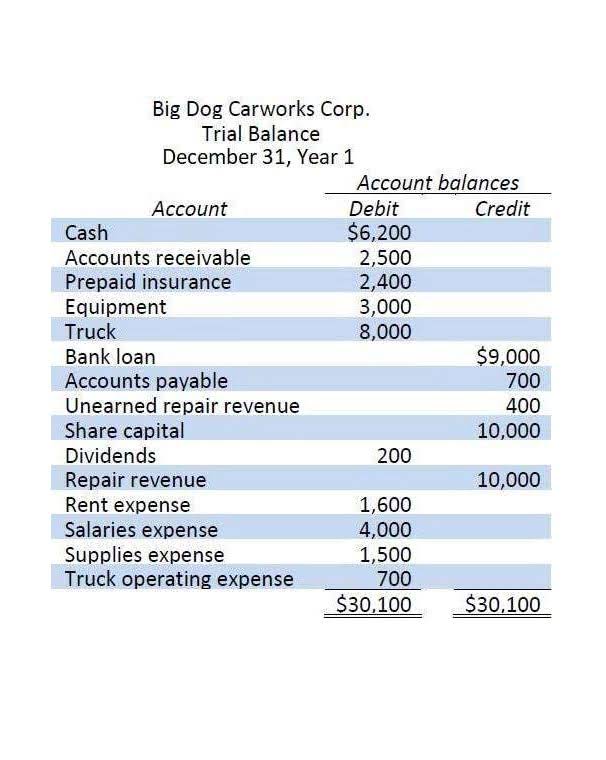Content

A special item of compensation may not be included in the employee’s rate of compensation, unless it was provided in lieu of base pay. A state employee’s rate of compensation includes base pay, plus any emolument or stipend provided as a salary supplement in lieu of base pay. Displays the current vacation balance accrued for the employee in the (Vacation balance is …) information field. Employees accrue three standard workweeks of vacation per year for the first eight years of continuous service.

The employee might be able to decide whether they want to roll over time off, cash it out, or do a mix of the two options. And when an employee leaves your business, you may need to pay out accrued time off and include it in their final pay. To make a journal entry, credit the vacation payable account and debit the expense account.
Unlimited Pto
To ensure you roll over or cash out the correct accrual amounts, you need to know how to calculate accrued time off. You don’t need a PTO accrual calculator, but you do need to know the process. As long as the multiplier is based on your yearly hours worked, minus the hours you take off, then all should be correct. My situation is similar to Doug’s, except my employees get 1 week after 1 year; 2 weeks after 3 years and 3 weeks after 6 years of employment. The length of eligible service is calculated based on a “benefit year”. This is the 12-month period that begins when the employee is hired. The employee accrued another $ 2,000 this current year , so the liability account is back to its balance of 2,000.
Some employers put limits on how much accrued time off an employee can roll over or cash out at the end of the year. Establish a sick or vacation accrual policy in your employee handbook. Include things like how much paid time off employees earn and what employees can do with accrued time off. When you pay employees for vacation hours, you are reducing the cash available to the business. This decrease in cash is recorded as a credit entry in the cash account. The vacation payable account however gets a contra entry in adherence to the accounting principle of double entry. To maintain balance in the accounting books of the business, an accrued vacation should be recorded in the journal.
To calculate PTO for employees, you need to take the yearly accrued vacation and divide it by the number of pay periods (12 for monthly pay, 24 for twice a month, or 26 for bi-weekly pay). Allowing 40 hours of borrowed time gives an employee a full week off. To avoid lump accumulations and to more accurately calculate PTO, companies can implement earning PTO incrementally with each pay period. Eligible University Staff employees on fiscal-year schedules earn 6.77 hours per pay period , prorated by FTE. University staff employees on academic-year schedules earn 6.77 hours of vacation time per pay period, but only during the months they are working.

Once you’ve calculated the vacation pay for your hourly employees, you also need a clear way to track the hours. The key to calculating vacation pay is to let the numbers treat your employees like they’re working, even when they’re on vacation.
Business Math: How And When To Calculate Pto
Providing vacations and PTO for part-time employees can give them time off to regroup and come back to work full of enthusiasm and energy. In addition, such a policy will maintain employee loyalty because most part-time positions do not include this benefit.
- It is still the responsibility of the employer to decide on how best to go about this.
- The vacation payout is computed at the compensation rate and FTE in effect on the last day worked.
- The employee will receive 40 PTO hours for the year and six paid holidays , so you will need to subtract those hours from the total in step 1.
- Many employers struggle with calculating vacation pay for their employees.
- This policy applies to all benefits eligible staff employees.
- So between May 1 and December 31, she will have been employed for 244 days at the boutique in 2018.
Any policy has to benefit both the business and its employees, but often paid time off can end up being a hassle for both. The number of working hours in a month will vary from month to month, depending on the number of workdays in the month for a Monday-through-Friday 40-hour-per-week employee. Other payroll calculations can affect vacation calculations. A new Vacation Accrual check box in the Subject to section of the window lets you control which taxable benefits or non-taxable deductions affect the accrual amount.
Most Popular Articles Of The Last 24 Hours
The employee has more than a full day of PTO saved up, so granting them the morning off is possible from a PTO perspective. There are many different ways to calculate PTO accrual — from the simple to the complex. Whatever PTO numbers and roll-over policy you choose, be sure to provide all the details in your employee handbook. PTO is the abbreviation for “paid time off” (or, sometimes, “personal time off”).
If you already know the percentage, you may enter it into a system like OnTheClock, and the system would calculate and maintain the PTO bank automatically. However, if you are unsure of what the percentage is, the formula shown below works the same as above. Like the above example, years can vary slightly in the number of workdays, and you may use the free tool at the bottom of this page for precise calculations. Calculating PTO accrual banks and rates isn’t a simple task, but very important for every manager professional to understand when tracking this benefit. When performed manually, it can be confusing and prone to errors if not accurately calculated.
- For example, after one year at a company, an employee receives 10 paid vacation days, after five years they receive 15 paid vacation days, and at 10 years they receive 20 paid vacation days.
- Some businesses don’t offer PTO at all, while other businesses offer it to their full-time employeesbut not their part-time employees.
- Creating a time-off policy is the first step in setting up your PTO accrual policy.
- You terminate the employee after they work 1,500 hours during a calendar year.
- Small businesses that offer paid time off must manage accruals accurately to avoid labor law violations.
The other is a bank, where employees are given a set number of hours for a certain time period. The employee is entitled to be paid for the Memorial Day holiday that occurs on May 25, 2009, and will receive payment for that holiday on their final regular paycheck. Therefore, the holiday does not affect the calculation of the lump sum payment. You can run a Payroll Records~Vacation Payout query in this window to view a list of vacation payouts for a specified range of employees and pay periods. You can also drill down from the query to view the underlying transaction for a selected payout. Creating a time-off policy is the first step in setting up your PTO accrual policy. Building a policy becomes less of a hassle with holidays, calendars, and workweeks of around 18 countries built-in.
How To Prorate Vacation Days For Full
Decide how many hours you would want your employees to get each year if they worked a regular full-time https://www.bookstime.com/ schedule. Next, figure out how many hours your employees would work in a year if they worked full time.
- A yearly accrual rate is great for long-term employees or employees who have already put in a year of tenure.
- As the employee takes time off, simply subtract it from the current total.
- After working 400 hours, the employee has 20 hours of accrued time off.
- All products and services featured are selected by our editors.
Multiply the amount you accrue each pay period by the number of pay periods you’ve worked. If you’ve worked two months without taking any time off and are paid semimonthly, you’ve accrued 20 hours; 5 PTO hours per pay period times 4 pay periods equals 20.
These paid holidays usually represented New Year’s Day, Memorial Day, Independence Day, Labor Day, Thanksgiving, and Christmas. One of the benefits of the every-two-week calculation is that your employees will always see the same amount on their paycheck. That said, once an employee accumulates a week’s worth of hours (e.g., 40), the math is very similar to the daily calculation.
Calculating Vacation Pay: The Different Methods
This PTO rule will accrue hours based on the number of regular hours an employee works and excludes overtime, holiday, and paid time off hours in the accrual. How to Calculate Accrued Vacation Pay For example, if an employee works 32 hours and uses 8 hours of PTO, the eight hours of paid time off would not accrue additional paid time off.
This policy applies to all benefits eligible staff employees. The resulting number is your daily pay (which you may not be familiar with, if you’re a salaried employee). That is how much each day you work—and each vacation day or paid day off—is worth. OnTheClock’s time tracking system will perform these calculations for you, providing you with extra time to invest in growing your business. PTO Policy states an accrual rate of .0625 hours per hour worked.
The employee will receive their vacation pay due to them with each payroll. Employee uses AL, PH and, vacation days prior to retirement. The employee and department head calculate last day in office prior to retirement.
Employees must record vacation time that is taken on the appropriate time off calendar. A paid time off bank provides an accurate representation of the number of unused hours an employee has earned. These hours are available to use by the employee when they need to use PTO. This is beneficial when deciding to approve or deny PTO when an employee makes a request.
Within traditional PTO, there are two common ways to assign PTO hours. The first is accrual, where employees earn PTO for each day or hour they work.
Time tracking software is easy to implement into your business and makes tracking PTO a breeze. This means no more hand-written math equations that will take hours of your time to complete. To correctly calculate PTO, your policy will determine how many hours your employees can potentially accrue each year.
Vacation Leave Accrual
So, after working 4 hours, your employee has earned 0.16 of paid time off. This is the simplest method for calculating PTO and is ideal for long-time employees and full-time employees who have already worked a full year. Some businesses make it mandatory that all employees use their PTO in one calendar year, eliminating the need for a roll-over policy. Any hours remaining at the end of December disappear at the beginning of January. The first step in implementing a paid-time-off policy is to decide how much time you will offer. Remember, PTO is entirely optional, so you decide on the number of hours that works for your business. You might be able to connect it to your payroll provider as well to save you the heavy-lifting and make sure hours and vacation pay stay consistent and accurate.
When employers choose to accrue PTO, it involves calculating PTO hours per pay period. For example, if an employer pays employees semi-monthly, the employee might earn five hours of PTO each pay period. Providing smaller amounts of PTO means employees typically have to stagger the amount they take, instead of using it all at once.
The default vacation setting for all employees and contractors is ‘Not applicable’ and no vacation pay is accrued or paid out. If you’re fortunate enough to receive paid time off—aka PTO—or paid holidays, you know the anticipation of waiting for the next day off. The darker flipside of PTO is that you probably also know the stress of managing your time off. You can also use this method to calculate PTO for a full-time employee who works less than eight hours a day on certain days. Other businesses have a use-it-or-lose-it policy when it comes to paid time off. If an employee doesn’t use their accrued time off by a particular day, they lose it. In many businesses, accrued time off expires at the end of the year.
The full-time staff employee maximum accrual rate is twice the amount of vacation earned each year. June involves payment for a partial month because the number of vacation time hours carried forward to June is less than the number of working hours in June.


